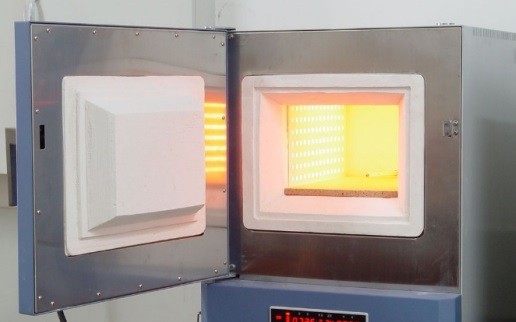Introduction to Muffle Furnaces
Muffle furnaces have long been a cornerstone in industrial and scientific processes, evolving from their historical origins to modern electric designs. These versatile heating devices are essential for tasks ranging from metallurgy to ceramics, ensuring materials are heated uniformly and safely. This comprehensive guide delves into the intricacies of muffle furnaces, exploring their working principles, diverse types, and critical applications across various sectors. Whether you're a professional in the field or a researcher seeking precision, understanding how to select, maintain, and innovate with muffle furnaces is crucial for optimal performance and safety. Join us as we uncover the secrets of these powerful tools and their pivotal role in modern industry.
Working Principle of Muffle Furnaces
Muffle furnaces are essential tools in laboratories and industrial settings, designed for high-temperature processing of materials while maintaining isolation from combustion byproducts. This section delves into the detailed working principle of muffle furnaces, focusing on the role of refractory bricks and the mechanism of indirect heating.
Indirect Heating Mechanism
The core principle of a muffle furnace is indirect heating. Unlike direct heating furnaces where the material is exposed to the heat source, muffle furnaces use a separate chamber, known as the muffle, to contain the material. This muffle is typically made from high-quality ceramic materials such as alumina or silicon carbide, which are capable of withstanding extreme temperatures and chemical reactions.
In operation, an electric current is passed through the heating elements located outside the muffle chamber. These elements, often made of materials like Nichrome or Kanthal, generate heat which is then radiated towards the muffle. The muffle absorbs this heat and transfers it to the material inside, ensuring uniform heating without direct exposure to the heat source. This indirect method prevents contamination of the material by combustion byproducts and ensures a clean, controlled heating environment.
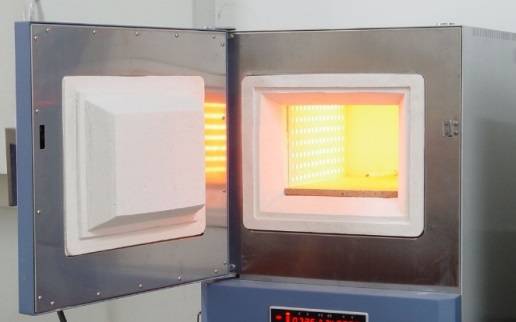
Role of Refractory Bricks
Refractory bricks play a crucial role in the design and functionality of muffle furnaces. These bricks are used to line the interior of the furnace chamber, providing several key benefits:
-
Insulation and Heat Retention: Refractory materials have high heat resistance and low thermal conductivity, which helps in maintaining high temperatures inside the furnace for extended periods. This property is essential for processes that require precise temperature control over long durations.
-
Uniform Heat Distribution: The refractory lining ensures that heat is distributed evenly throughout the muffle chamber, preventing hotspots and ensuring consistent heating of the material. This uniformity is critical for processes like annealing, sintering, and calcination where temperature gradients can affect the final properties of the material.
-
Protection from Corrosion and Erosion: The refractory bricks also protect the furnace structure from the corrosive and erosive effects of high-temperature processes. This extends the lifespan of the furnace and reduces maintenance requirements.
Temperature Control and Monitoring
Modern muffle furnaces are equipped with advanced digital controllers that allow for precise temperature control. These controllers use sensors such as thermocouples or thermistors to monitor the internal temperature of the furnace in real-time. The feedback from these sensors enables the controller to make instantaneous adjustments to the heating elements, ensuring that the set temperature is maintained accurately. This level of control is vital for experiments and processes that require specific temperature profiles to achieve desired outcomes.
Applications of Muffle Furnaces
Muffle furnaces are used in a wide range of applications across various fields, including:
- Materials Science: For processes like sintering, annealing, and heat treatment of metals and ceramics.
- Chemistry: Inorganic and organic compound synthesis that requires high temperatures.
- Environmental Testing: Ashing of samples to determine the inorganic content.
- Pharmaceuticals: Sterilization and pyrolysis of organic materials.
In conclusion, the working principle of muffle furnaces is based on indirect heating through a refractory-lined muffle chamber, ensuring clean and controlled high-temperature processing. The use of refractory materials and advanced temperature control systems makes muffle furnaces indispensable in numerous scientific and industrial applications.
Types of Muffle Furnaces
Muffle furnaces are essential equipment in laboratories and industrial settings for various high-temperature processes such as annealing, drying, sintering, and burning off organic matter. These furnaces are designed to provide a controlled environment, ensuring that the samples are heated uniformly without direct exposure to the heating elements. The classification of muffle furnaces can be based on several factors including the heating mechanism, maximum temperature, and type of insulation material. Here, we will discuss the different types of muffle furnaces based on their heating mechanisms, such as electric, gas, and oil-fired furnaces.
Electric Muffle Furnaces
Electric muffle furnaces are the most commonly used type in laboratories due to their ease of operation, precision, and reliability. These furnaces utilize electric heating elements, typically made of materials like Nichrome or Kanthal, which heat up when an electric current is passed through them. The heat generated is transferred to the chamber, which is lined with high-temperature refractory materials to maintain the heat and protect the outer casing from high temperatures.
Electric muffle furnaces are available in a wide range of temperatures, typically from 500°C to 1800°C. They are equipped with temperature controllers that allow for precise temperature regulation, making them suitable for applications requiring high accuracy and repeatability. Some advanced models come with programmable controllers that can store multiple heating cycles, enhancing their utility in research and quality control processes.
Gas-Fired Muffle Furnaces
Gas-fired muffle furnaces use natural gas or propane as their heating source. These furnaces are often used in industrial applications where large volumes of material need to be processed at high temperatures. The advantage of gas-fired furnaces lies in their high thermal efficiency and faster heating rates compared to electric furnaces. They are also more cost-effective in terms of operational costs, especially in regions where gas is cheaper than electricity.
However, gas-fired furnaces require more complex safety measures due to the presence of combustible gases. They are equipped with safety features such as flame failure protection, gas pressure regulators, and exhaust systems to ensure safe operation. Despite these complexities, their ability to handle larger loads and achieve higher temperatures makes them a preferred choice in certain industrial applications.
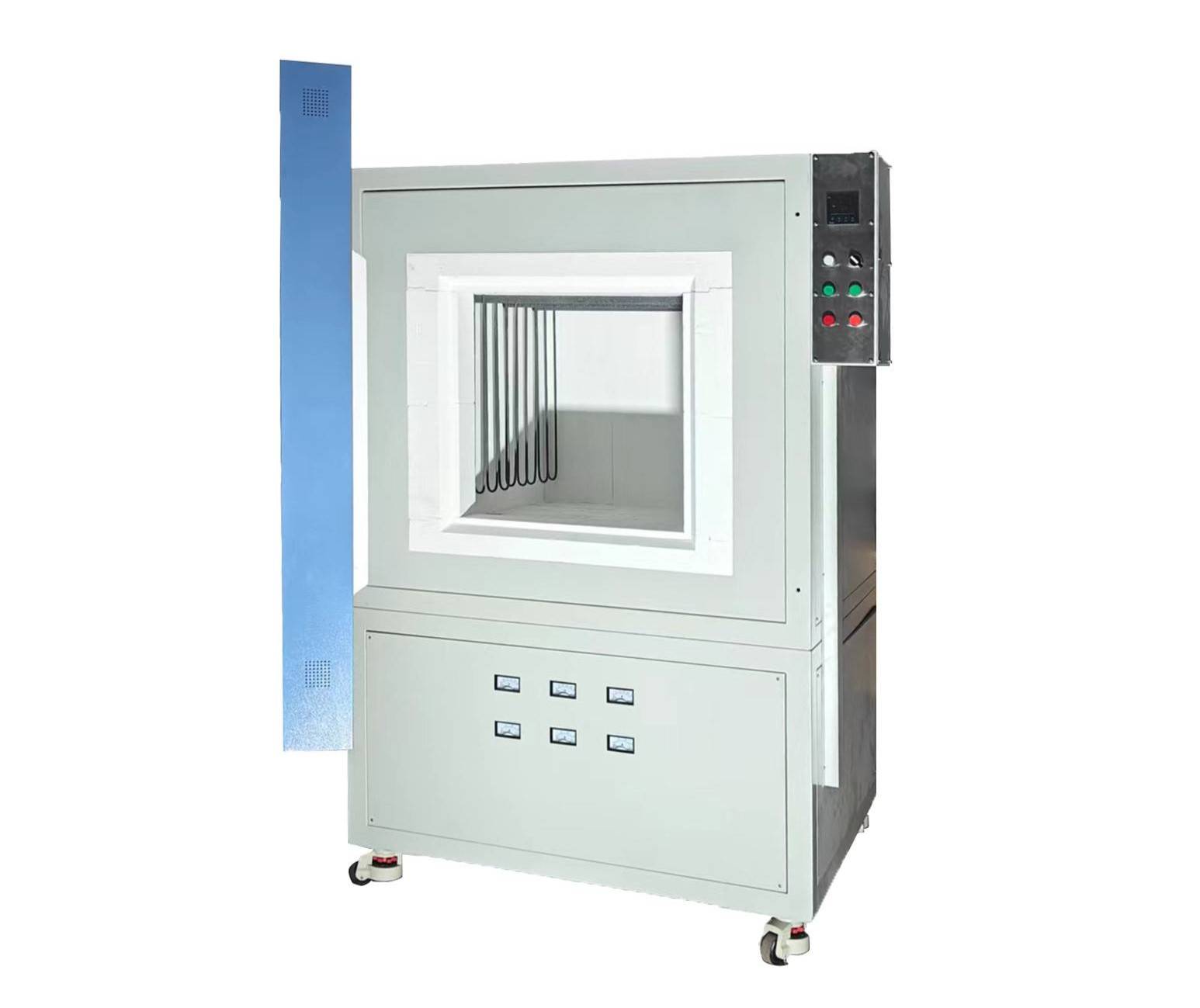
Oil-Fired Muffle Furnaces
Oil-fired muffle furnaces are less common but are used in specific industrial applications where oil is the preferred or only available fuel source. These furnaces operate similarly to gas-fired furnaces but use oil as the combustion medium. They are capable of reaching very high temperatures, often exceeding 1000°C, and are suitable for processes that require high thermal input.
The main challenges with oil-fired furnaces include the need for regular maintenance due to soot and ash accumulation, and the environmental impact associated with oil combustion. However, they offer a reliable and powerful heating solution in environments where alternative fuels are not feasible.
Conclusion
The choice of a muffle furnace depends on the specific requirements of the application, including the required temperature range, sample size, operational costs, and safety considerations. Electric muffle furnaces are versatile and widely used in laboratory settings, while gas and oil-fired furnaces are more suitable for industrial applications requiring high thermal efficiency and large-scale processing. Understanding the characteristics and applications of each type of muffle furnace helps in selecting the most appropriate equipment for specific needs.
Applications of Muffle Furnaces in Industry
Muffle furnaces are essential tools in various industries, particularly in metallurgy, ceramics, and research laboratories. These furnaces are designed to operate at extremely high temperatures, ranging from 900°C to 1800°C, making them ideal for a multitude of heat treatment processes such as annealing, ashing, and calcination.
Metallurgy
In the field of metallurgy, muffle furnaces play a critical role in the heat treatment of metals. They are used for processes such as annealing, which involves heating metals to a specific temperature and then slowly cooling them to change their physical and sometimes chemical properties. This process helps in reducing hardness, improving ductility, and enhancing machinability. Muffle furnaces are also used for the alloying of metals, where different metal components are heated and mixed to create alloys with desired properties.
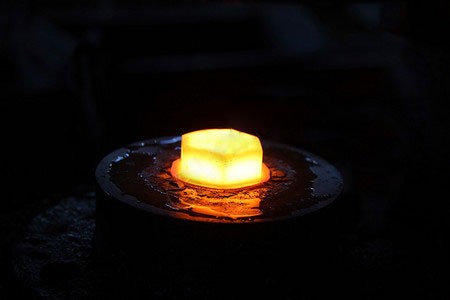
Ceramics
The ceramics industry utilizes muffle furnaces extensively for the firing of ceramic products. These furnaces provide the controlled high-temperature environment necessary for the sintering process, where ceramic particles are heated to cause them to bind together. This process is crucial for the production of high-quality ceramic goods, including pottery, tiles, and advanced technical ceramics. Additionally, muffle furnaces are used in the creation of enamel coatings and glass formation, where precise temperature control is essential for achieving the desired outcomes.
Research Laboratories
In research laboratories, muffle furnaces are indispensable for a variety of high-temperature applications. They are used for ashing organic materials, which involves heating samples to high temperatures to burn off organic matter, leaving behind inorganic residues for analysis. This is particularly important in environmental testing, where muffle furnaces are used to determine the ash content of soils, sediments, and other materials. Furthermore, these furnaces are utilized in materials research for processes such as sintering, metallizing, and firing of advanced materials.
Other Applications
Beyond metallurgy, ceramics, and research, muffle furnaces find applications in several other industries. In the pharmaceutical industry, they are used for the ashing of drug samples to determine their purity. In the nuclear industry, muffle furnaces are employed in the disposal of nuclear fuel, where high temperatures are required to safely handle and process radioactive materials. Additionally, these furnaces are used in quality control processes across various industries, ensuring that products meet the required standards.
Technological Advancements
Modern muffle furnaces have seen significant advancements in technology, particularly in the materials used for heating elements. For instance, the use of molybdenum disilicide allows furnaces to reach temperatures up to 1800°C, facilitating more sophisticated metallurgical applications such as debinding, sintering, and metal injection molding. These advancements have expanded the capabilities of muffle furnaces, making them even more versatile and essential tools in high-temperature industrial processes.
In conclusion, muffle furnaces are integral to a wide range of industries, providing the high-temperature environments necessary for various heat treatment processes. Their applications span from traditional uses in metallurgy and ceramics to cutting-edge research and industrial processes, highlighting their critical role in modern technology and manufacturing.
Choosing the Right Muffle Furnace
When selecting a muffle furnace for your laboratory or industrial needs, it's crucial to consider several key factors to ensure that the equipment meets your specific requirements. A muffle furnace, also known as a resistance furnace, is essential for various high-temperature processes such as chemical analysis, metal heat treatment, and ceramic sintering. Here are detailed guidelines to help you choose the right muffle furnace:
Temperature Range
The temperature range of a muffle furnace is a critical specification. It should exceed your required operating temperature by at least 100-200°C to ensure safety and longevity. For instance, if your experiments require temperatures up to 1000°C, select a furnace with a maximum temperature of 1100-1200°C. This buffer ensures that the furnace can handle the heat without compromising its performance or lifespan.
Furnace Chamber Size
The size of the furnace chamber should be determined based on the volume and weight of the samples you intend to process. Typically, the chamber volume should be at least three times the total volume of the samples to allow for proper heat distribution and airflow. For example, if your samples occupy 10 liters, a 30-liter chamber would be appropriate.
Furnace Chamber Material
The material of the furnace chamber impacts its thermal efficiency and durability. Common materials include:
- Ceramic Fiber: Lightweight, soft, and excellent for insulation. Ideal for rapid heating and cooling cycles.
- Refractory Brick: Heavier, hard, and offers general insulation. Suitable for long, continuous runs at high temperatures.
Power Supply Voltage
Ensure that the muffle furnace is compatible with your laboratory's power supply. Common voltages are 220V and 380V. Misalignment can lead to equipment failure or operational issues.
Heating Element
The choice of heating element depends on the maximum temperature required for your applications:
- Resistance Wire: Suitable for temperatures up to 1200°C.
- Silicon Carbide Rods: Used for temperatures between 1300°C and 1400°C.
- Silicon Molybdenum Rods: Ideal for temperatures up to 1700°C.
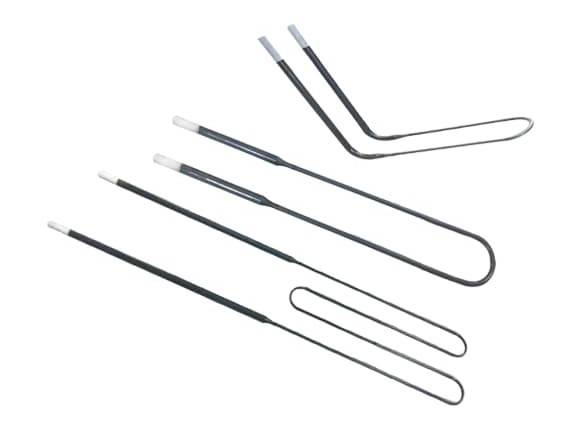
Energy Efficiency
Energy efficiency is another important consideration. Look for furnaces with good insulation and advanced control systems that minimize heat loss and reduce energy consumption. This not only lowers operating costs but also contributes to environmental sustainability.
Safety Features
Safety should never be overlooked. Ensure that the muffle furnace includes essential safety features such as automatic shut-off mechanisms, thermal overload protection, and clear emergency procedures. These features protect both the operator and the equipment.
Customization and Support
Consult with experienced suppliers to discuss any specific needs you might have, such as custom sizes, additional safety features, or specialized heating elements. A reliable supplier will provide comprehensive support, including installation, training, and maintenance services.
Conclusion
Choosing the right muffle furnace involves a careful assessment of temperature requirements, chamber size, material, power supply, heating elements, energy efficiency, and safety features. By considering these factors, you can select a muffle furnace that not only meets your current needs but also ensures long-term reliability and performance. Always consult with professionals to make an informed decision that aligns with your laboratory's specific requirements.
Maintenance and Safety Tips for Muffle Furnaces
Muffle furnaces are essential tools in laboratories for high-temperature processes such as annealing, sintering, and calcination. To ensure their longevity and the safety of operators, regular maintenance and adherence to safety protocols are crucial. This section delves into essential maintenance practices and safety measures to prolong the life of a muffle furnace and ensure operator safety.
Routine Maintenance Practices
-
Initial and Periodic Baking: When a muffle furnace is used for the first time or after a long period of suspension, it must be baked. The baking process should be conducted at temperatures ranging from 200°C to 600°C for approximately four hours. During regular use, the furnace temperature should not exceed the rated temperature to prevent damage to the electric heating elements.
-
Environmental Conditions: The furnace and its controller should be operated in an environment with a relative humidity not exceeding 85%. The workspace should be free from conductive dust, explosive, or corrosive gases. Materials with volatile gases, such as oils and greases, should be avoided as they can corrode the heating elements and reduce their lifespan.
-
Thermocouple Care: The temperature measurement thermocouple should be regularly checked for proper functioning. Interference with the thermocouple can lead to erratic display values and increased measurement errors. Ensuring the thermocouple is properly grounded or using a three-wire output thermocouple can mitigate these issues.
-
Regular Cleaning: The furnace chamber should be kept clean by regularly removing oxides and other residues. This not only helps in maintaining the furnace's efficiency but also prevents potential safety hazards.

Safety Measures
-
Operational Familiarity: Operators must thoroughly read and understand the furnace's operating manual. Familiarity with the procedures ensures safe and correct usage.
-
Personal Protective Equipment (PPE): Operators should wear appropriate PPE, including high-temperature gloves and goggles, to protect against burns and eye injuries.
-
Load Management: The furnace should not be overloaded beyond its rated capacity. Overloading can lead to equipment failure and potential safety hazards.
-
Furnace Atmosphere: The furnace atmosphere must be controlled to match the requirements of the sample being processed. This is crucial for preventing unwanted chemical reactions or contamination.
-
Regular Equipment Checks: Regular inspections of the furnace, including wires, plugs, and heating elements, are essential. Early detection of potential issues can prevent accidents.
-
Grounding and Electrical Safety: Ensuring the furnace is properly grounded is vital to prevent electric shocks. Additionally, flammable materials should not be placed inside or around the furnace to avoid fire hazards.
-
Heating and Cooling Procedures: Operators should follow the specified heating and cooling procedures. Rapid cooling or arbitrary changes to heating parameters can damage the furnace and pose safety risks.
-
Emergency Preparedness: A fire extinguisher should be kept nearby, and operators should be aware of emergency procedures. In case of malfunction, the furnace should be immediately shut down, and professional repair services should be contacted.
Conclusion
Maintaining a muffle furnace through regular cleaning, proper environmental management, and careful handling of the thermocouple extends its lifespan and ensures consistent results. Safety measures such as wearing PPE, managing load capacity, and adhering to heating and cooling procedures are indispensable for preventing accidents and ensuring the well-being of operators. By integrating these maintenance and safety practices, laboratories can optimize the performance of their muffle furnaces while minimizing risks.
Advanced Features and Innovations in Muffle Furnaces
Muffle furnaces have evolved significantly from their basic designs, incorporating advanced features that enhance their functionality, efficiency, and applicability in various scientific and industrial processes. These innovations include programmable controllers, energy-saving technologies, and advanced insulation materials, each playing a crucial role in improving the performance and usability of muffle furnaces.
Programmable Controllers
Modern muffle furnaces are equipped with sophisticated digital controllers that allow for precise temperature management. These controllers utilize thermocouples or thermistors to continuously monitor the internal temperature of the furnace. By providing real-time feedback, they enable users to set and maintain specific temperature levels with high accuracy. This feature is particularly beneficial in applications requiring consistent heating conditions, such as ashing samples or heat-treating materials.
The programmable nature of these controllers also allows for the creation of custom heating profiles. Users can set specific temperature gradients and hold times, which is essential for processes that require gradual heating or cooling to prevent thermal shock in sensitive samples. For instance, in metallurgical applications, such as debinding and sintering, precise temperature control ensures the integrity and quality of the final product.
Energy-Saving Technologies
Energy efficiency is a critical consideration in the design of modern muffle furnaces. Innovations in heating elements and insulation materials have significantly reduced energy consumption while maintaining high performance. For example, the use of molybdenum disilicide heating elements allows furnaces to operate at temperatures up to 1,800 degrees Celsius (3,272 degrees Fahrenheit) with improved energy efficiency.
Advanced insulation materials, such as high-temperature refractory ceramics, further contribute to energy savings by minimizing heat loss. These materials provide excellent thermal resistance, ensuring that the heat generated within the furnace remains contained, thereby reducing the energy required to maintain high temperatures. This not only lowers operational costs but also makes muffle furnaces more environmentally friendly.
Advanced Insulation Materials
The choice of insulation materials in muffle furnaces is crucial for both performance and energy efficiency. Modern furnaces utilize advanced refractory materials that offer superior insulation properties. These materials not only prevent heat loss but also ensure uniform heat distribution within the chamber, leading to more consistent results in heating applications.
Moreover, these advanced insulation materials are designed to withstand the extreme temperatures encountered in muffle furnaces, ensuring long-term durability and reliability. This is particularly important in high-temperature applications, such as metallurgical processes, where the furnace must maintain its structural integrity and insulation properties over extended periods.
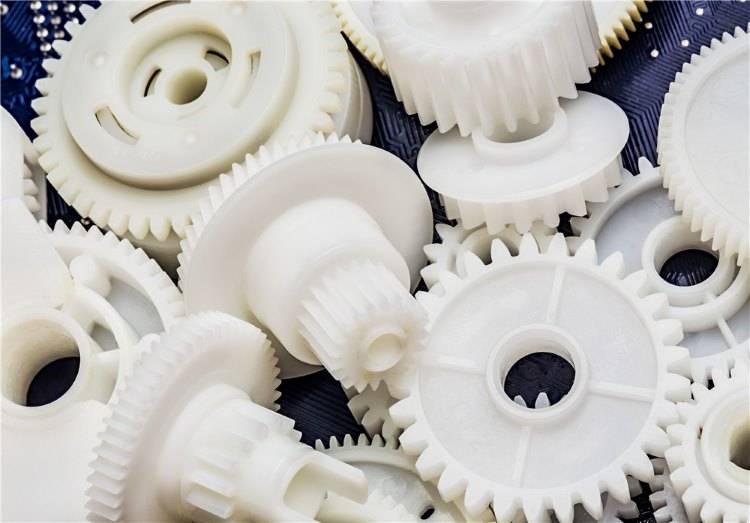
Applications of Advanced Muffle Furnaces
The integration of these advanced features has expanded the applications of muffle furnaces across various fields. In laboratories, muffle furnaces are used for ashing biological samples, determining the organic content of soils, and conducting high-temperature reactions. In industrial settings, they are employed in heat-treating metals, ceramics, and composites, as well as in the production of advanced materials through processes like sintering and metal injection molding.
The ability to precisely control temperature and maintain uniform heating conditions makes advanced muffle furnaces indispensable tools in research and manufacturing. Their energy-efficient design also aligns with current trends towards sustainable practices, making them a preferred choice for modern scientific and industrial applications.
In conclusion, the advanced features and innovations in muffle furnaces have significantly enhanced their capabilities, making them more versatile, efficient, and reliable. The incorporation of programmable controllers, energy-saving technologies, and advanced insulation materials has not only improved their performance but also broadened their applicability in various high-temperature processes. As technology continues to advance, we can expect further enhancements that will continue to push the boundaries of what muffle furnaces can achieve.
Related Products
- 1700℃ Muffle Oven Furnace for Laboratory
- 1400℃ Muffle Oven Furnace for Laboratory
- 1800℃ Muffle Oven Furnace for Laboratory
- 1200℃ Muffle Furnace Oven for Laboratory
- Molybdenum Vacuum Heat Treat Furnace
Related Articles
- Muffle vs. Tube Furnace: How One Choice Prevents Costly Research Failures
- Why Your Ashing Tests Fail: The Hidden Difference Between Muffle and Ashing Furnaces
- Beyond 1000°C: How Precision Furnaces Conquer the Hidden Enemy of Repeatable Results
- Muffle vs. Tube Furnace: How the Right Choice Prevents Catastrophic Lab Failure
- Why Your High-Temperature Experiments Fail: The Furnace Flaw Most Labs Overlook
